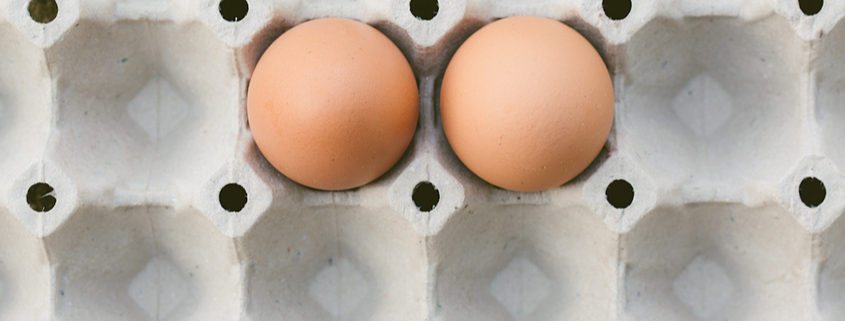I Am in the Mood for a Chocolate Chip Cookie…Follicles and Ovarian Reserve.
Who doesn’t like a good gooey, moist, chocolate-filled chocolate chip cookie? The more chips the better, says every part of your body but your tush! The same can be said for the follicles (and eggs) in your ovaries. The more, the better—at least most of the time!
A big part of the fertility assessment is ovarian reserve. You probably hear your fertility doctor throw this term around like it’s candy (or cookies! ): “Your ovarian reserve looks good!” “Your ovarian reserve is not so good.” You may be nodding and thinking, “What in the world are they talking about?”
Ovarian reserve is the medical way of saying how many eggs you have and what their quality is. While most of our assessment comes from hormones and blood work (cue FSH and AMH), a big “bite of the cookie” comes from our ultrasound. This ingredient is as basic as sugar and flour to making a finger-licking calorie worth its cookie.
An ultrasound performed in the early part of your menstrual cycle (a.k.a. the follicular phase) can tell us a lot about what your ovaries have left to give. Is your bag of chips half full, or are you running dangerously low on supply? By measuring the follicles (a.k.a. “chocolate chips”), we can get a good idea about the egg quantity (a.k.a. ovarian reserve). We call this measurement of follicles your antral follicle count (nicknamed AFC).
An AFC is ideally done on day 2–5 of the menstrual cycle. By doing it early, we can catch you at what we like to call baseline. “Home base” is when we can get the best idea about what is going on in those ovaries because no follicles have yet to start running the bases.
Eggs are invisible (to the naked human eye). It doesn’t matter how high we crank the ultrasound waves, we will never be able to see those eggs unless we bust out our microscopes and speed-dial our embryologist friends. Eggs live in follicles. (Picture a dozen eggs that you would buy in a grocery store—the shells cover the eggs. Unless you crack them, you won’t see them.) We need to count follicles to find out about egg number. Although it is an indirect measure of ovarian reserve, it is pretty on point.
We do a lot of ultrasounds. We can look at the screen and pretty quickly size up those ovaries. But a little baker’s secret for all of you laypeople—the little black circles in the ovaries are the follicles. (Anything fluid filled on an ultrasound will be black). The ovaries are usually grayish/white. So put that together, and what do you get? Bibbidi bobbidi CHEW! You probably get the visual at this point…the more follicles (number of chocolate chips) in the ovaries, the chewier they look. The chewier they are, the more eggs you have!
On the flip side (or the less tasty side), the fewer the follicles and the more white/gray ovary, the lower the antral follicle count. The lower the antral follicle counts, the fewer the eggs. It’s a simple as your most basic recipe!
Surprisingly there are some times when cookies can be just too sweet. You know when you take that first bite, and you think, hmm, I can’t go much further? Well, the same goes for ovaries. There are some with too many chips. Polycystic ovaries can have too many follicles or structures that look like follicles. There is a plethora (think many, many bags) of these small follicles/cysts that can impact the regularity with which you ovulate and your ability to make a baby on your own. It can also lead to elevated testosterone levels and cause all of those unfavorable side effects (think hair and pimples).
Back in the day, women with “PCO ovaries” were routinely taken to the operating room to remove a piece of their ovary to cut down on these small follicles/cysts and all the negative things that they bring.
Just like chocolate chip cookies, we all have brands we prefer. Some of us swear by Duncan Hines, while others of us go for the Nestle Tollhouse. And there are those that are out there and like to make them themselves (go, girl, go!). Whatever your sweet tooth desires, there is something to get it going. Ovaries are the same way. Some of us may have chocolate chips galore while others of us are more like a sugar cookie.
While antral follicle count tells us a lot about what your egg number may be, it does not mean that just because your bag needs to be refilled, you won’t have a baby. It just helps us pick the right ingredients (fertility meds) in the right amount to make your cookie!

